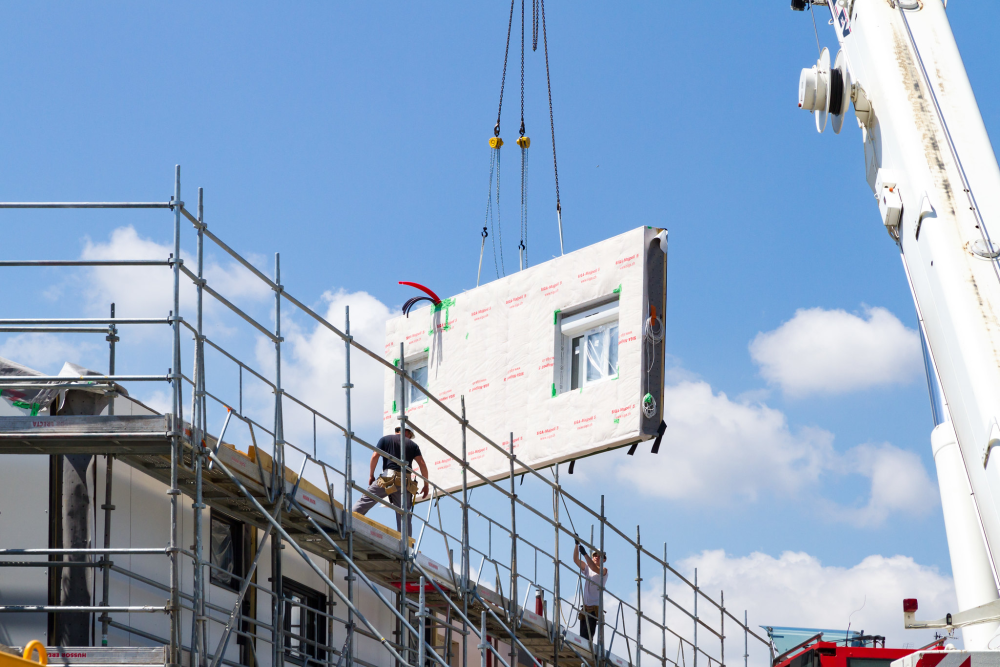This summer, Canadians are cheering on our athletes at the Pan American Games in Lima, Peru. So far, our fastest, highest, and strongest women have captured gold medals in canoe/kayak, gymnastics, and rugby. However, beyond athletic competition, where is Canada’s next big win?
With Canadians growing increasingly concerned about extreme weather and worsening natural disasters, I’m looking to our homes and buildings. I want to build another home team.
Polls show four out of five Canadians are worried about climate change, and three-quarters of Canadians believe the country needs to take more action. To do its fair share in the international effort to tackle human-caused global heating, Canada must swiftly rein in its carbon pollution and follow through on its climate targets. The building sector is the third biggest contributor to greenhouse gas emissions in Canada. Making our homes and buildings ultra energy efficient and low carbon is one of the keys to victory.
New buildings are being constructed to higher standards of performance than ever before. But that’s only half the picture. Existing homes and buildings are lagging behind on energy efficiency, and by 2050 they will constitute at least half of our building stock. In 30 years, will they still be wasting energy and coughing up pollution that destabilizes our climate?
While the number of buildings categorized as “green” is on the rise, comparatively few are retrofit projects. (To locate high-performance buildings out west, for example, try out the Pembina Institute’s interactive B.C. Green Buildings Map.) At a time when land values are skyrocketing, homelessness is on the rise, and tent cities are exposing ugly class divisions, existing buildings provide space for a range of housing costs and options that we can’t afford to lose. Tearing down all the high-emitting buildings is out of the question.
This was on my mind during a recent visit to Hamilton, Ont., to learn about the Ken Soble Tower transformation. At 18 storeys, the apartment tower will dedicate 146 social housing units for seniors, and support accessibility for aging in place and barrier-free living. The modernization will provide high-quality, safe, and healthy housing for another generation, according to Sean Botham, senior development project manager for CityHousing Hamilton, a municipal corporation. The building is being prepared for what’s being billed as the “first Passive House retrofit of an existing residential tower in North America.”
Aging infrastructure with good bones is worth protecting and upgrading to achieve energy efficiency improvements, carbon pollution reductions, and greater resilience. High-performance buildings are easier to heat and cool, less drafty and therefore more comfortable, better ventilated so they are healthier, and less costly to run. However, significant reinvestment is need to retrofit a building such as the Ken Soble Tower, so government support is critical for renewal.
It’s worth noting this type of tower design is used throughout the Greater Toronto and Hamilton Area. As Botham points out, there is substantial opportunity for replication beyond the social housing sector. Go ahead and add another “W” in the “win” category — for the market opportunity just waiting to be tapped.
Canadians spend 90 per cent of our lives indoors. Ensuring a healthy level of indoor air quality, free of mould and pollution, requires us to be more deliberate about how we move air and moisture in and out of our work and living spaces. Deep energy retrofit solutions are already available, but market forces are not driving building upgrades at a fast enough pace. Shifts in how we procure, value, finance, and regulate energy services are needed to create a stable market for these solutions.
As a start, the Pembina Institute, with financial support from Natural Resources Canada, is convening a group of Canadian cities to help them examine their roles in the ecosystem. Pembina is also developing a pilot program for energy retrofits of social housing complexes in B.C.
We need all levels of government to prioritize regulations and investment that drive the uptake of innovative retrofit solutions to protect housing and cut carbon pollution. Indeed, Canada’s next big win lies close to home.
This op-ed originally appeared in the Hamilton Spectator (July 31, 2019).








